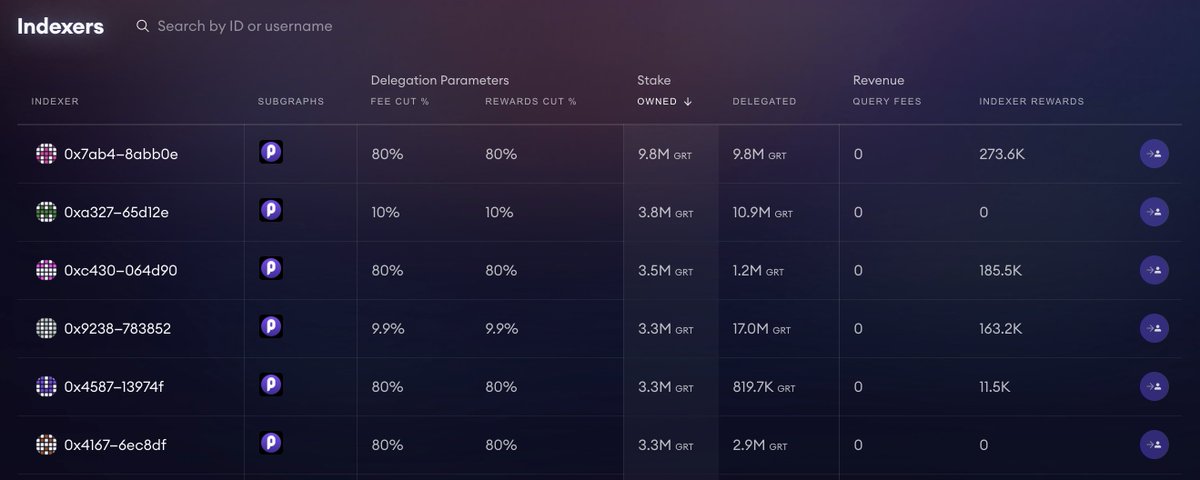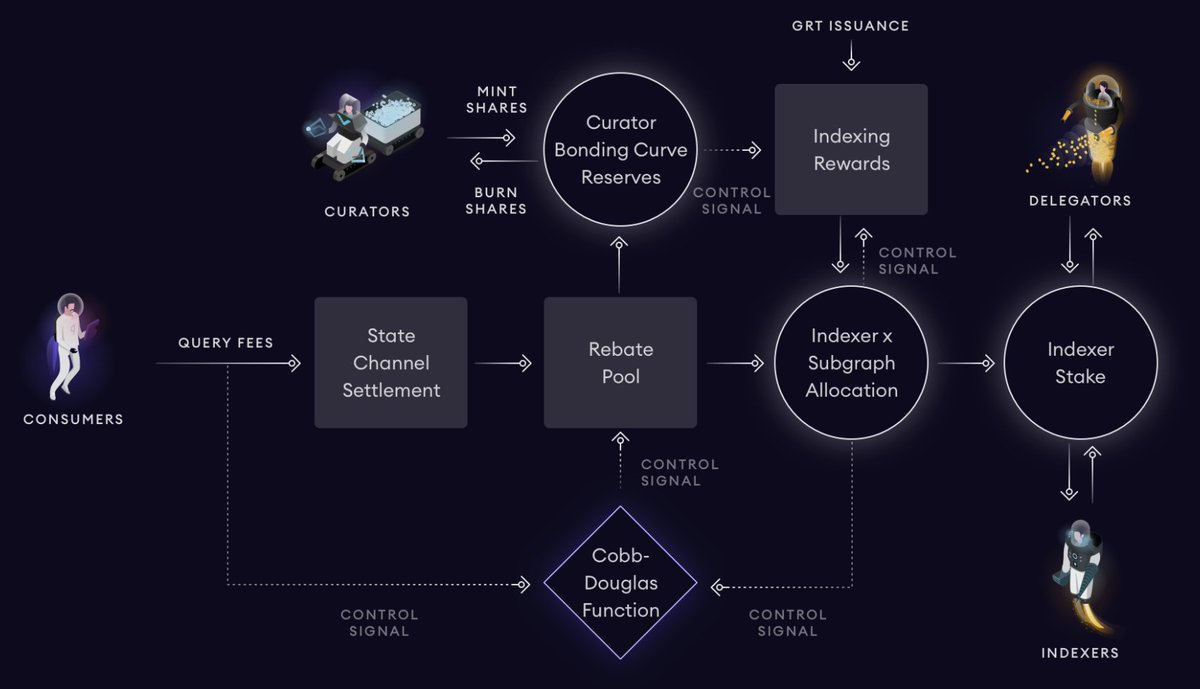So you heard the @graphprotocol is providing accessible on-chain data to over 3400+ subgraphs.
"What Google does for search, The Graph does for blockchains."
Let's explore what this means and how $GRT plays a critical role in this ecosystem
"What Google does for search, The Graph does for blockchains."
Let's explore what this means and how $GRT plays a critical role in this ecosystem

Subgraphs are the lifeblood of the network.
Consumers make queries (or data requests) to relay info like price, volume, and liquidity.
They temporarily lived on a hosted service, allowing for free deployment while the decentralized network was being built out.
Enter $GRT
Consumers make queries (or data requests) to relay info like price, volume, and liquidity.
They temporarily lived on a hosted service, allowing for free deployment while the decentralized network was being built out.
Enter $GRT

With $GRT, Indexers run nodes to host subgraphs in exchange for issuance and query fees.
Indexers select subgraphs to index based on curation.
To become an indexer, node operators post a minimum self-bond of 100k tokens.
Indexers select subgraphs to index based on curation.
To become an indexer, node operators post a minimum self-bond of 100k tokens.
Curators deposit $GRT to subgraph bonding curves and earn a portion of query fees + curation rewards.
The more $GRT deposited to a subgraph, the more valuable that data is perceived to be and the more query fees it is thought to earn.
Curation is set to launch in January.
The more $GRT deposited to a subgraph, the more valuable that data is perceived to be and the more query fees it is thought to earn.
Curation is set to launch in January.
Delegators delegate $GRT to an Indexer in exchange for a portion of query fees and issuance.
Delegation allows passive, non-techincal users to secure the network without running a node.
Indexes set a fixed Fee and Reward % they keep before passing earnings to Delegators.
Delegation allows passive, non-techincal users to secure the network without running a node.
Indexes set a fixed Fee and Reward % they keep before passing earnings to Delegators.
So where does demand come in?
- Consumers buy $GRT to pay for queries
- Indexers stake $GRT to run a node
- Curators deposit $GRT to subgraph bonding curves
- Delegators delegate $GRT to Indexers
Plus, a % of query fees, withdraw taxes and unclaimed rebates are burned.
- Consumers buy $GRT to pay for queries
- Indexers stake $GRT to run a node
- Curators deposit $GRT to subgraph bonding curves
- Delegators delegate $GRT to Indexers
Plus, a % of query fees, withdraw taxes and unclaimed rebates are burned.
Indexers need to know where Curators are depositing $GRT.
Curators need to know which bonding curves are most lucrative to put their $GRT to work.
Delegators need to know which Indexers are making the most query fees, but charging the lowest commissions to earn the most $GRT.
Curators need to know which bonding curves are most lucrative to put their $GRT to work.
Delegators need to know which Indexers are making the most query fees, but charging the lowest commissions to earn the most $GRT.
I'm most excited to be a Curator.
Each bonding curve has an implied market cap based on the amount of query fees that subgraph will earn.
Curators can calculate a return based on those fees to determine if the curve is over or under signaled. https://thegraph.com/blog/curator-program-launch
Each bonding curve has an implied market cap based on the amount of query fees that subgraph will earn.
Curators can calculate a return based on those fees to determine if the curve is over or under signaled. https://thegraph.com/blog/curator-program-launch
This allows specialized actors to capture rewards from their expertise.
Power users can curate subgraphs in their infancy, earning $GRT for signaling to value early in its lifecycle.
No wonder the Curator Program has 1600+ participants! https://twitter.com/Cooopahtroopa/status/1326748024584904705?s=20
Power users can curate subgraphs in their infancy, earning $GRT for signaling to value early in its lifecycle.
No wonder the Curator Program has 1600+ participants! https://twitter.com/Cooopahtroopa/status/1326748024584904705?s=20
Special shoutout to @yanivgraph @theklineventure @evabeylin @davekajpust and @martint for running such a well-rounded rollout.
The successful launch is directly correlated to the commitment to community empowerment.
Here's to many more curation economies coming in 2021!
The successful launch is directly correlated to the commitment to community empowerment.
Here's to many more curation economies coming in 2021!

 Read on Twitter
Read on Twitter




